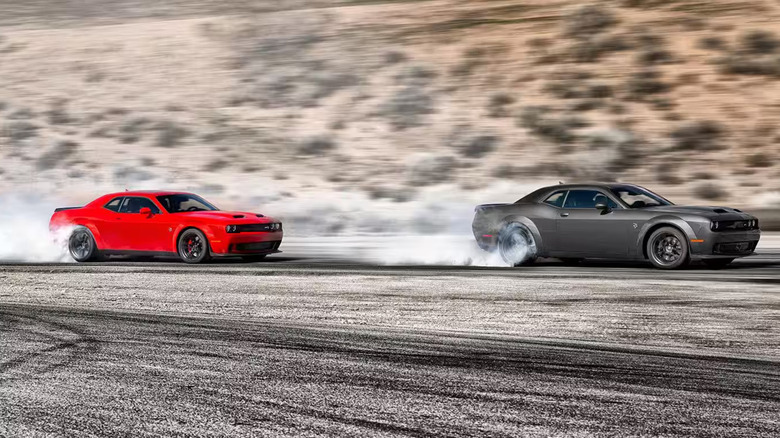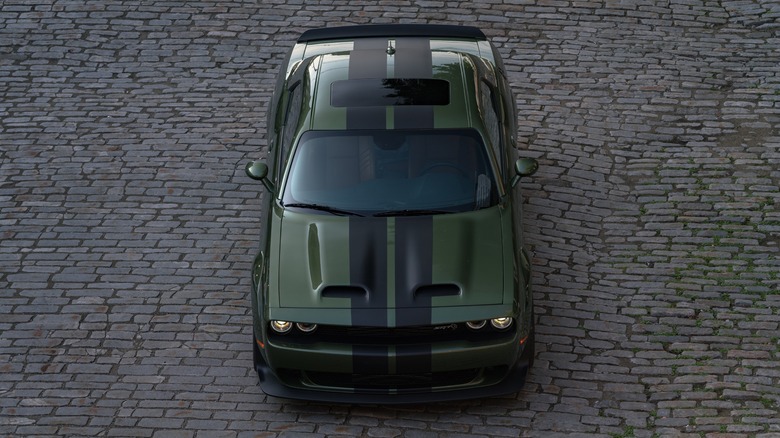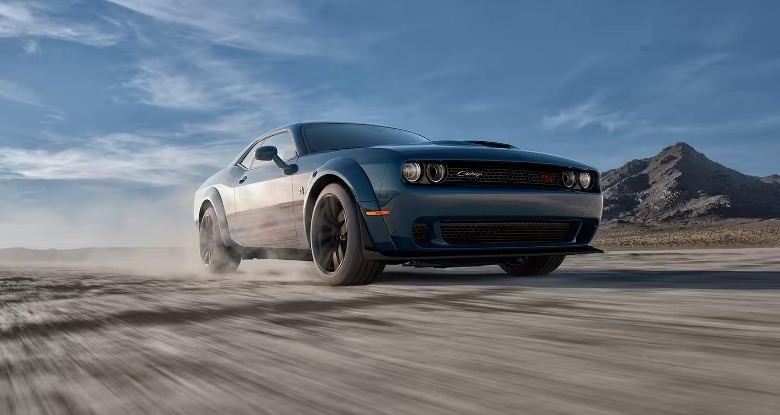What's The Difference Between The Dodge Challenger R/T And Hellcat?
Legacy automaker Dodge ended production of its Challenger and Charger muscle cars in 2023. However, it unveiled "Last Call" variants before the final curtain call — an ode to the legendary brotherhood of muscle that commenced in the mid-'60s. The Charger got the Super Bee, Scat Pack Swinger, and King Daytona, while the Challenger received Shakedown, Swinger, and Black Ghost variants.
The final "Last Call" Challenger is the SRT Demon 170. This track-tuned, dragstrip-conquering machine is the most potent muscle car in Dodge's long and illustrious automotive history: boasting a 1,025-horsepower supercharged V8 engine that enables a 0-60 mph run in an unbelievable 1.9 seconds.
Dodge ended production of the 2023 Challenger with the typical SXT, GT, R/T, R/T Scat Pack, and SRT Hellcat trim grades. Of the five, the R/T and SRT Hellcat exemplify the sporting prowess of the Challenger. The R/T, or "Road/Track" designation, first appeared in 1967 with the Dodge Coronet R/T, while the first Hellcat debuted in 2015 for the Challenger with a 707-horsepower supercharged V8.
Dodge Challenger R/T and SRT Hellcat: Knowing the differences
The Dodge Challenger R/T is the way to go if you want a V8. The base Challenger SXT and GT have a 303-horsepower V6, but the R/T is the gateway to the brotherhood of muscle. The Challenger R/T has a 5.7-liter V8 with a standard six-speed manual or optional eight-speed automatic gearbox. Choosing the former nets 375 horsepower and 410 pound-feet of torque from the V8, but selecting the automatic gives you 372 horsepower and 400 pound-feet of torque. The standard equipment includes active exhaust, brawnier brakes, performance suspension, a hood scoop, cloth seats, and 20-inch wheels.
Meanwhile, the Challenger SRT Hellcat receives an updated 6.2-liter V8 with 717 horsepower and 656 pound-feet of torque. All that twist routes to the rear wheels using a six-speed manual or eight-speed automatic transmission.
The performance upgrades include SRT-specific components, like wider tires, racing suspension with adaptive dampers, six-piston Brembo brakes, a custom hood, and a flat-bottom steering wheel. The Hellcat was available with a widebody package that included wider fender flares, wider tires, and bespoke suspension.
The changes have made the Challenger SRT Hellcat a relatively swift and raucous muscle car, capable of reaching a 203 mph top speed. If, for some reason, you find the SRT Hellcat's 717 horsepower insufficient, upgrading to the SRT Hellcat Redeye (797 horsepower) or SRT Super Stock (807 horsepower) is the next best thing.


